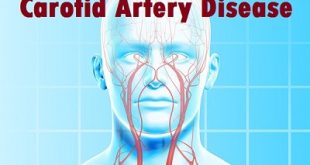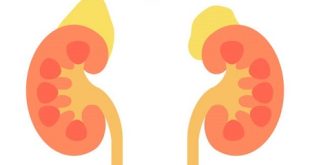Description
Carbon monoxide poisoning occurs when carbon monoxide builds up in your bloodstream. When too much carbon monoxide is in the air, your body replaces the oxygen in your red blood cells with carbon monoxide. This can lead to serious tissue damage, or even death.
Carbon monoxide is a colorless, odorless, tasteless gas produced by burning gasoline, wood, propane, charcoal or other fuel. Improperly ventilated appliances and engines, particularly in a tightly sealed or enclosed space, may allow carbon monoxide to accumulate to dangerous levels.
If you think you or someone, you’re with may have carbon monoxide poisoning, get into fresh air and seek emergency medical care.
Pathophysiology
CO toxicity causes impaired oxygen delivery and utilization at the cellular level. CO affects several different sites within the body but has its most profound impact on the organs (eg, brain, heart) with the highest oxygen requirement.
Cellular hypoxia from CO toxicity is caused by impedance of oxygen delivery. CO reversibly binds hemoglobin, resulting in relative functional anemia. Because it binds hemoglobin 230-270 times more avidly than oxygen, even small concentrations can result in significant levels of carboxyhemoglobin (HbCO).
An ambient CO level of 100 ppm produces an HbCO of 16% at equilibration, which is enough to produce clinical symptoms. Binding of CO to hemoglobin causes an increased binding of oxygen molecules at the three other oxygen-binding sites, resulting in a leftward shift in the oxyhemoglobin dissociation curve and decreasing the availability of oxygen to the already hypoxic tissues.
CO binds to cardiac myoglobin with an even greater affinity than to hemoglobin; the resulting myocardial depression and hypotension exacerbates the tissue hypoxia. Decrease in oxygen delivery is insufficient, however, to explain the extent of the CO toxicity. Clinical status often does not correlate well with HbCO level, leading some to postulate an additional impairment of cellular respiration.
CO can produce direct cellular changes involving immunological or inflammatory damage by a variety of mechanisms, including the following:
- Binding to intracellular proteins (myoglobin, cytochrome a,a 3)
- Nitric oxide generation leading to peroxynitrite production
- Lipid peroxidation by neutrophils
- Mitochondrial oxidative stress
- Apoptosis
- Immune-mediated injury
- Delayed inflammation
What are the causes of Carbon monoxide poisoning?
Carbon monoxide poisoning is caused by inhaling combustion fumes. When too much carbon monoxide is in the air you’re breathing, your body replaces the oxygen in your red blood cells with carbon monoxide. This prevents oxygen from reaching your tissues and organs.
Various fuel-burning appliances and engines produce carbon monoxide. The amount of carbon monoxide produced by these sources usually isn’t cause for concern. But if they’re used in a closed or partially closed space — cooking with a charcoal grill indoors, for example — the carbon monoxide can build to dangerous levels.
Smoke inhalation during a fire also can cause carbon monoxide poisoning.
Other common sources of carbon monoxide include the following:
- Malfunctioning cooking appliances
- Tobacco smoke
- Clogged chimney
- Auto exhaust or idling vehicles
- Malfunctioning water heater
- Malfunctioning oil, wood, gas, or coal furnaces
- Malfunctioning gas clothes dryer
- Wood burning fireplace, gas log burner, or any unvented space heater
- Gas or fuel-burning appliances in cabins or campers, barbecue grills, pool or spa heaters, or ceiling-mounted heating units
- Fires
Who is most at risk for CO poisoning?
Everyone is at risk for carbon monoxide poisoning. In winter, risks are higher because of improperly maintained heating systems or people warming up cars in garages. At highest risk are:
- Unborn babies.
- Infants.
- Older adults. Most deaths from CO poisoning happen to adults 65 and older.
- People living at high altitudes.
- People with chronic heart disease, anemia or respiratory (breathing) problems.
- People with already-high CO levels, such as those who smoke.
People who have CO exposure through their jobs are also at higher risk. Harmful CO levels exist in places such as boiler rooms, warehouses or petroleum refineries. Occupations with high CO levels include:
- Firefighters
- Forklift operators
- Garage mechanics
- Police officers
- Taxi drivers
- Tollbooth attendants
- Welders
Check if you have symptoms of carbon monoxide poisoning
Carbon monoxide gas is colourless and does not smell, so you cannot tell if it is around you.
Symptoms of carbon monoxide poisoning include:
- Headache
- Dizziness
- Feeling sick or being sick
- Feeling weak
- Confusion
- Chest and muscle pain
- Shortness of breath
The symptoms may come and go. They may get worse when you spend time in an affected room or building and get better when you leave or go outside.
What are the complications of carbon monoxide poisoning?
Even minor cases of CO poisoning can cause serious complications. These may include:
- Brain damage
- Heart damage
- Organ damage
- Death
Due to the seriousness of these potential complications, it’s important to get help as soon as possible if you believe you have CO poisoning.
Diagnosis of CO Poisoning
- Nonspecific symptoms or metabolic acidosis in at-risk patients
- Venous carboxyhemoglobin level
Because symptoms can be vague, nonspecific, and variable, the diagnosis of carbon monoxide (CO) poisoning is easily missed. Many cases of mild poisoning with nonspecific symptoms are mistaken for viral syndromes. Physicians must maintain a high level of suspicion. If people from the same dwelling, particularly a heated dwelling, experience nonspecific flu-like symptoms, CO exposure should be considered.
If CO poisoning is suspected, the carboxyhemoglobin level in the blood is measured with a CO-oximeter; venous samples can be used because arteriovenous differences are trivial. Arterial blood gases (ABGs) are not measured routinely. ABGs and pulse oximetry, alone or combined, are inadequate for diagnosis of CO poisoning because oxygen saturation reported in ABGs represents dissolved oxygen and is thus unaffected by carboxyhemoglobin concentration; furthermore, the pulse oximeter cannot differentiate normal hemoglobin from carboxyhemoglobin and thus provides a falsely elevated oxyhemoglobin reading. Noninvasive CO detectors have not been shown to be accurate or useful in the diagnosis of CO exposure or toxicity.
Although elevated carboxyhemoglobin levels are clear evidence of poisoning, levels may be falsely low because they decrease rapidly after CO exposure ends, particularly in patients treated with supplemental oxygen (eg, in an ambulance). Metabolic acidosis can be a clue to the diagnosis. Other tests may help evaluate specific symptoms (eg, electrocardiography for chest pain, CT, and MRI for neurologic symptoms).
How is carbon monoxide poisoning treated?
If a doctor suspects you have CO poisoning, you’ll receive treatment immediately once you’re in the hospital. Quick treatment is essential to prevent life-threatening complications. Treatment may involve:
Oxygen treatment
The best way to treat CO poisoning is to breathe in pure oxygen. This treatment increases oxygen levels in the blood and helps to remove CO from the blood. Your doctor will place an oxygen mask over your nose and mouth and ask you to inhale. If you’re unable to breathe on your own, you’ll receive oxygen through a ventilator.
Oxygen chamber
Your doctor may temporarily place you in a pressurized oxygen chamber (also known as a hyperbaric oxygen chamber). The oxygen chamber has twice the pressure of normal air. This treatment quickly increases oxygen levels in the blood and it’s typically used in severe cases of CO poisoning or to treat CO poisoning in pregnant women.
Emergency care
You should never treat CO poisoning yourself. If you believe you have CO poisoning, go outdoors immediately and call 911. Don’t drive yourself to the hospital, because you may pass out while driving.
How can I prevent CO poisoning in my home?
- Install a battery-operated or battery back-up CO detector in your home. Check or replace the detector’s battery when you change the time on your clocks each spring and fall. Place your detector where it will wake you up if it alarms, such as outside your bedroom. Consider buying a detector with a digital readout. This detector can tell you the highest level of CO concentration in your home in addition to alarming. Replace your CO detector every five years.
- Have your heating system, water heater, and any other gas, oil, or coal burning appliances serviced by a qualified technician every year.
- Do not use portable flameless chemical heaters indoors.
- If you smell an odor from your gas refrigerator have an expert service it. An odor from your gas refrigerator can mean it could be leaking CO.
- When you buy gas equipment, buy only equipment carrying the seal of a national testing agency, such as Underwriters’ Laboratories.
- Make sure your gas appliances are vented properly. Horizontal vent pipes for appliances, such as a water heater, should go up slightly as they go toward outdoors, as shown below. This prevents CO from leaking if the joints or pipes aren’t fitted tightly.
- Have your chimney checked or cleaned every year. Chimneys can be blocked by debris. This can cause CO to build up inside your home or cabin.
- Never patch a vent pipe with tape, gum, or something else. This kind of patch can make CO build up in your home, cabin, or camper.
- Never use a gas range or oven for heating. Using a gas range or oven for heating can cause a build-up of CO inside your home, cabin, or camper.
- Never burn charcoal indoors. Burning charcoal – red, gray, black, or white – gives off CO.
- Never use a portable gas camp stove indoors. Using a gas camp stove indoors can cause CO to build up inside your home, cabin, or camper.
- Never use a generator inside your home, basement, or garage or less than 20 feet from any window, door, or vent.
- When using a generator, use a battery-powered or battery backup CO detector in your home.
 Diseases Treatments Dictionary This is complete solution to read all diseases treatments Which covers Prevention, Causes, Symptoms, Medical Terms, Drugs, Prescription, Natural Remedies with cures and Treatments. Most of the common diseases were listed in names, split with categories.
Diseases Treatments Dictionary This is complete solution to read all diseases treatments Which covers Prevention, Causes, Symptoms, Medical Terms, Drugs, Prescription, Natural Remedies with cures and Treatments. Most of the common diseases were listed in names, split with categories.







